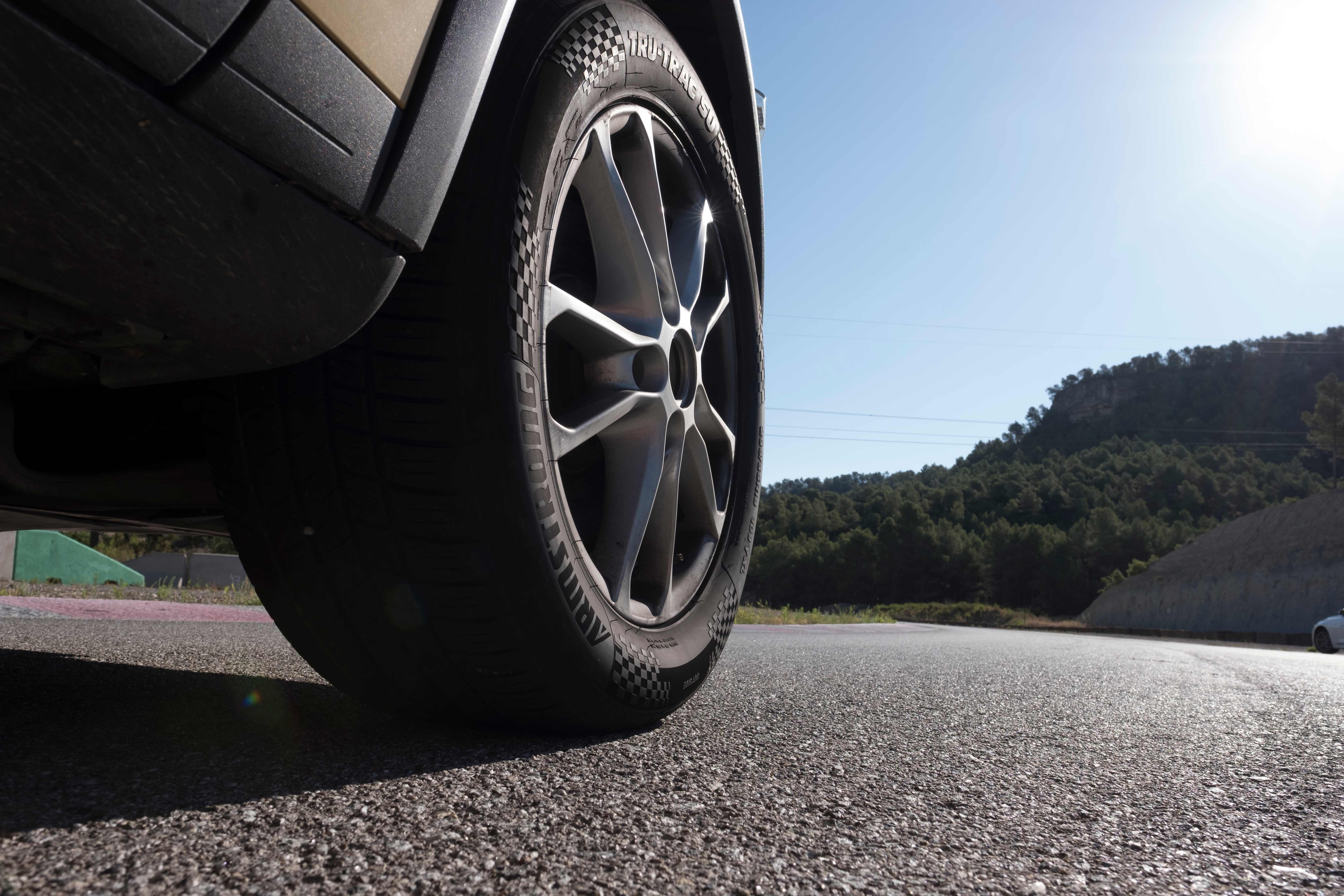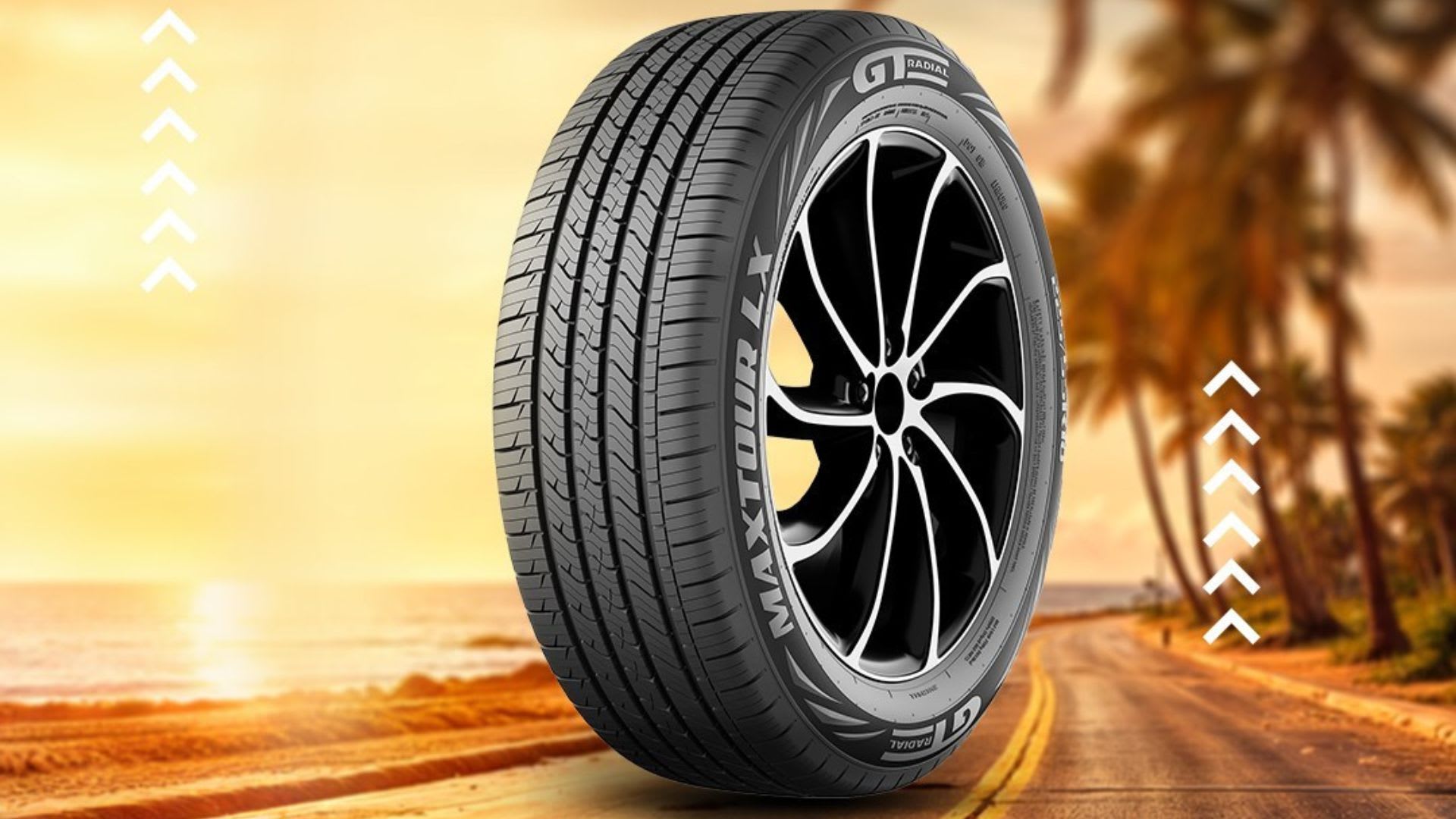Compare
Free shipping
Best price guarantee
Special pricing
Financing with Resolve
Easy returns

Based in the US, Armstrong is one of the world’s oldest tire makers and rolls out quality yet affordable tires for passenger cars, SUVs, CUVs, and light trucks. A fairly new tire brand compared to Armstrong, GT Radial Tire focuses on delivering value products in different categories, including all-season, all-terrain, UHP, all-weather, mud terrain, and highway terrain tires.
Choosing the right tire for your SUV or CUV often comes down to picking between specialized performance features and maximum all-season longevity at a manageable price point. In this review, we’ll be comparing two great options in the all-season segment: the Armstrong Tru-Trac SU and the GT Radial Maxtour LX.
The Armstrong Tru-Trac SU is built on the brand's legacy of value and durability, focusing heavily on enhancing ride comfort and stability for SUV drivers. Backed by a generous 65,000 mile limited manufacturer tread life warranty, it features unique cross-linked sipes designed to reduce rolling resistance, which translates directly to improved fuel efficiency for daily commutes and long trips.
Conversely, the GT Radial Maxtour LX positions itself as a grand touring option with a focus on a quiet experience and long-lasting tread. It features Harmonically Optimized Pitch Sequencing to virtually eliminate road noise, and a 70,000 mile limited manufacturer tread life warranty signals superior longevity. Both tires offer excellent year-round performance and wet grip, but differ in their core approach to SUV stability and comfort.
Without further ado, let’s delve into more details of the Armstrong Tru-Trac SU vs GT Radial Maxtour LX tires comparison.
Armstrong Tru-Trac SU tires

Designed for CUVs and SUVs, the Armstrong Tru-Trac SU is an all-season tire that offers great grip, handling, traction, and tread life in different driving conditions, including dry, wet, and light snow. Backed by a superb 65,000 mile limited manufacturer tread life warranty, the Tru-Trac SU features an asymmetric tread design with cross-linked sipes for enhanced wet performance and reduced rolling resistance. With a wide footprint, the Armstrong tire promises increased stability, cornering, and steering response on paved roads. It comes with a 6-year limited warranty, road hazard repairs, 24/7 roadside assistance, and 30-day money-back assurance.
Boasting an overall SimpleScore of 8.5, the Armstrong Tru-Trac SU assures enhanced traction, solid grip, confident handling, and a longer service life.
Get Armstrong Tru-Trac SU tires at the best deals for your vehicle here
GT Radial Maxtour LX tires

Launched in 2019, the GT Radial Maxtour LX is touted as a grand touring tire, suitable for passenger cars and CUVs. Covered by an excellent 70,000 mile limited manufacturer tread life warranty, the Maxtour LX features high tread depth, an asymmetric design that offers strong stability and handling performance in dry, wet, and light wintry conditions. The full-depth sipes and circumferential grooves clear water quickly from the tread to reduce the risk of hydroplaning and improve wet and light snow grip, control, and traction. It is backed by a road hazard warranty, 24-hour roadside assistance, a limited warranty, and a 30-day test drive trial (restrictions and limitations apply).
Achieving an 8.5 overall SimpleScore, the GT Radial Maxtour LX promises adequate handling, grip, cornering, comfort, and longevity throughout the year.
Get GT Radial Maxtour LX tires at the best deals for your vehicle here
Armstrong Tru-Trac SU vs GT Radial Maxtour LX tires on traction
The best thing about all-season tires is that they provide the necessary grip and traction year-round in dry, wet, and light snow conditions. The Armstrong and GT Radial all-season tires deliver decent traction. Let’s analyse their scores.
With an 8.1 traction score, the Tru-Trac SU features a large contact patch that enables more rubber on the surface, leading to better grip and traction. Moreover, the circumferential grooves of the Armstrong all-season tire evacuate water from the tread to resist hydroplaning and boost wet performance.
On the other hand, the GT Radial Maxtour LX secures a decent 8.0 in traction. Full-depth sipes of the all-season tire provide extra biting edges for effective grip and traction in dry, wet, and light snow. Longitudinal, lateral, and connected grooves help in flushing the water out of the tread to mitigate the risk of hydroplaning. The special rubber compound further aids in improving grip, leading to reduced stopping distance.
The Armstrong Tru-Trac SU wins the traction battle with a slight margin.
ADVANTAGE: Armstrong Tru-Trac SU
Armstrong Tru-Trac SU vs GT Radial Maxtour LX tires on handling
On highways, you need a capable tire that can help you navigate confidently year-round. Both tires promise adequate cornering, handling, and stability on dry, wet, and light snow, but one scores far better than the other. Let’s do the analysis to find out the winner.
Securing an 8.5 in handling, the Armstrong Tru-Trac SU features an asymmetric tread design with multiple cross-linked sipes and solid shoulders for strong lane changing, stability, cornering, and straight-line maneuverability on paved roads. The continuous center rib of the Armstrong tire further aids in improving steering response and control.
Contrarily, the GT Radial Maxtour LX scores an 8.2 in handling thanks to its asymmetric tread design and independent shoulder grooves that improve steering response and control in different driving conditions. The solid center rib and shoulder grooves provide effective control and stability.
With a better score, it’s Armstrong Tru-Trac SU that wins the handling battle, too. The scoreboard reads 2-0!
ADVANTAGE: Armstrong Tru-Trac SU
Armstrong Tru-Trac SU vs GT Radial Maxtour LX tires on longevity
All-season tires are preferred for their year-round performance and superb tread life. Often backed by limited mileage warranties, they are a preferred option for drivers wanting a long-lasting tire. The Tru-Trac SU and Maxtour LX return exceptional longevity scores, and there’s an element of surprise here.
Achieving a superb 9.1 longevity score, the Armstrong Tru-Trac SU is covered by a significant 65,000 mile limited manufacturer tread life warranty, reflecting its exceptional focus on long-lasting durability. Thanks to its durable rubber compound and an optimized design, it ensures even wear across the wide footprint. Furthermore, its shoulder bottom base and blocks retain tread continuity by preventing block wriggling and tire deformation, extending the tire's overall useful life.
Scoring an incredible 9.3 in longevity, the GT Radial Maxtour LX is backed by a superior 70,000 mile limited manufacturer tread life warranty, demonstrating its excellent wear resistance. Supported by an asymmetric tread pattern and a construction engineered to resist uneven wear, the GT Radial features a Harmonically Optimized Pitch Sequencing design that actively limits road noise for a quiet and smooth driving experience.
Ultimately, the GT Radial Maxtour LX ‘twists’ the Armstrong by pinning it in the longevity department.
ADVANTAGE: GT Radial Maxtour LX
When to use each
All-season tires are designed for year-round reliability, offering a balanced blend of performance for dry, wet, and light snow conditions. They feature specialized compounds and tread patterns for decent grip and handling across varying temperatures. All-season tires provide a practical, durable, and convenient option for drivers in moderate climates.
You can use the Armstrong Tru-Trac SU if you prefer enhanced grip, traction, and steering response, along with a decent tread life. However, the GT Radial Maxtour LX is good for those drivers who want exceptional longevity and are ready to compromise on handling and traction traits of their all-season tire.
Which one should you choose?

In a nutshell, the Armstrong Tru-Trac SU wins the traction and handling section while the GT Radial Maxtour LX wins the longevity section. However, each tire has its own individual qualities that should be considered before zeroing in on a tire. Let’s go to the final deal breaker in most cases, the price!
For the 225/55R19 106V size, the Armstrong costs $111 per tire, while four tires cost $444. Similarly, the GT Radial costs $123 per tire, while four tires cost $492 (a difference of $48 on four tires).
Based on SimpleScore, you should choose the Armstrong Tru-Trac SU if you:
- Drive vehicles like the Ford Explorer, Honda Pilot, and the Mitsubishi Outlander
- Want better traction (8.1 vs 8.0)
- Prefer an all-season tire with strong handling (8.5 vs 8.2)
Contrarily, you should go for the GT Radial Maxtour LX if you:
- Drive vehicles like the Chevrolet Equinox, BMW 3 Series, and the Ford Escape
- Want a tire with reduced noise and vibrations
- Prefer a tire with a longer service life (9.3 vs 9.1)
- Want tires with a longer mileage warranty (70,000 vs 65,000 miles)
Still not sure which tire to buy? Fortunately, SimpleTire is here to help, as our helpful agents are more than happy to assist you in selecting the right tire for your ride and budget.
Ready to find the perfect tires?
Search By